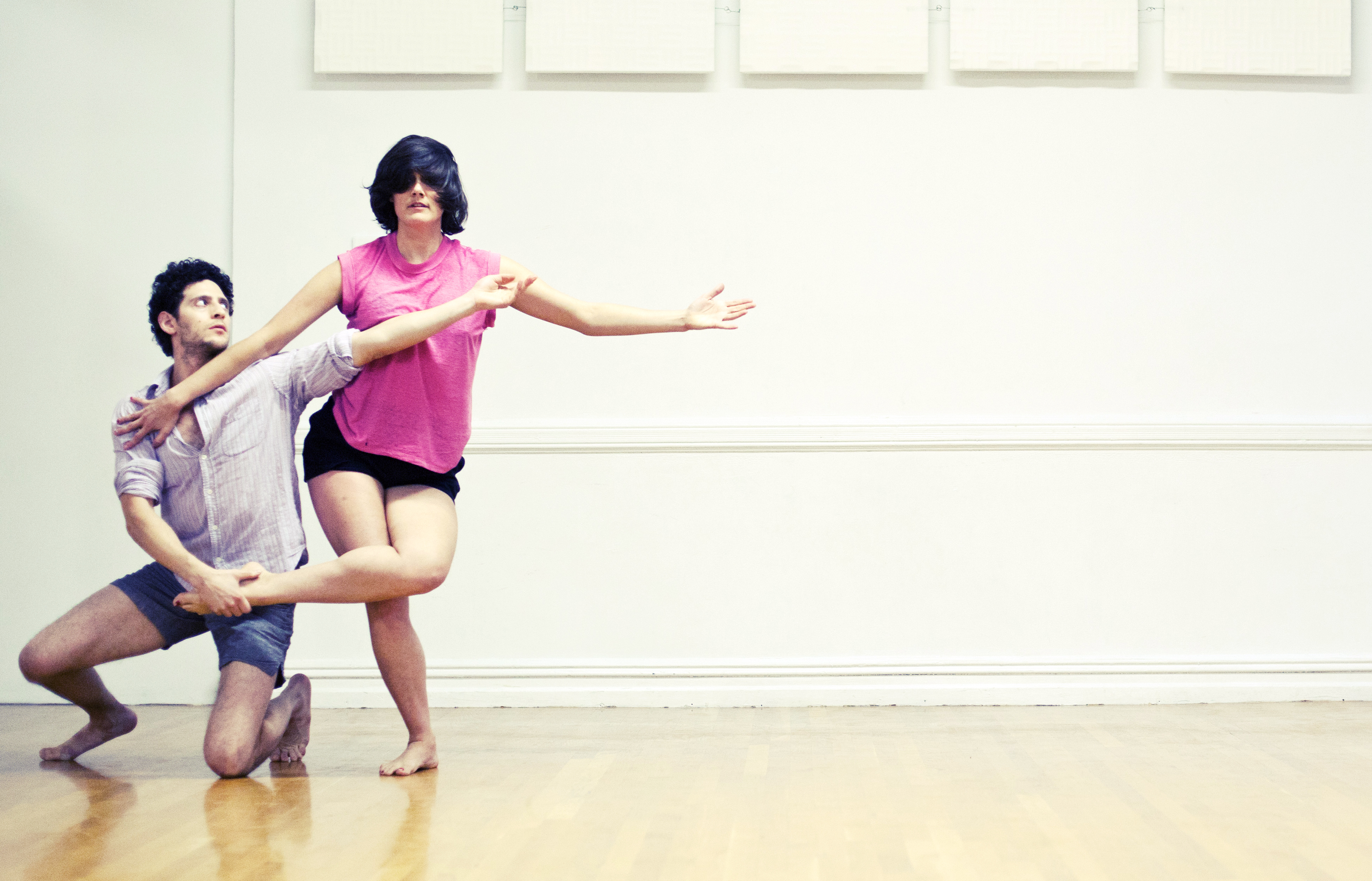New moves: Choreographer Faye Driscoll to visit UCLA as part of new Residency Program for Movement

courtesy of CHRISTY PESSGANO
The world arts and cultures/dance department is initiating a new residency program to bring new choreographers to campus. The program’s first resident artist is Faye Driscoll.
By Phillip Horlings
April 26, 2012 12:36 a.m.
UCLA sports teams are not the only ones hitting film rooms around campus. In the world of dance, video analysis can be one of few ways students try to learn about the techniques of out-of-reach choreographers.
A new residency initiative in the world arts and cultures/dance department aims to change that.
The new Residency Program for Movement is designed to bring the next generation of choreographers to UCLA, getting students away from book and film studies and into the dance studio. Today and Friday, students will be able to experience the choreography of the program’s first resident artist Faye Driscoll. Her latest work, “You’re Me,” will be performed on campus at Kaufman Hall.
Under the new residency program, UCLA dance students will participate in weeklong intensive workshops to gain insight into each resident’s choreography and methods. Additionally, master classes will be held for local high school students from strong dance departments.
Victoria Marks, a professor of dance at UCLA, said she is pleased to have Driscoll as the first resident artist under the program.
“She is a post-millennium, postmodern wild woman, … a very intelligent, risk-taking young artist. We know she’s going to stir us up,” Marks said.
The program’s focus on contemporary artists like Driscoll is indicative of UCLA’s progressive dance program, according to Marks. “We look at dance not as a perfect, museum-like, classical art to be preserved. It can be a vibrant, living example of the expression of people. … Bringing in artists who are capturing the attention of audiences around the country is very important,” Marks said.
Sharna Fabiano, a first-year graduate student in choreography, said she appreciates this attention to contemporary dance.
“The choreography faculty are all active artists, so there is the feeling that you are being guided by people that are very in touch with contemporary aesthetic concerns,” Fabiano said.
Fabiano also said that when learning the work of a new choreographer, workshops and master classes such as those offered through the new residency program are far better than the alternative.
“It’s not like reading a book or analyzing a video, it’s not virtual. You have five or six days, multiple hours a day to get a strong sense of their work. … The experience is really effective,” Fabiano said.
The Residency Program for Movement was designed to benefit more than UCLA dance students from the outset, according to Brad Tabach-Bank.
Tabach-Bank is a member of Royce Center Circle’s executive board, a financial support group that was instrumental in raising the funding that made the new residency program possible.
“We committed to try to put together a program … with the understanding that they would be holding master classes not only for UCLA students, but (also) for promising high school students who are dedicated to dance. That was the plan from the very beginning,” Tabach-Bank said.
In addition to funding the costs associated with resident choreographers, the Residency Program for Movement provides tickets for workshop and master-class participants alike to attend the residents’ UCLA performances.
Tabach-Bank committed to raise the money for the program after a visit with the world arts and cultures/dance faculty at Kaufman Hall.
“They started telling me about Kaufman Hall, which I had no knowledge of. We have this fabulous state-of-the-art performance venue that is not being used,” Tabach-Bank said.
Shortly after, he committed to raise the funds for the new residency program with Royce Center Circle.
Tabach-Bank said that he and the world arts and cultures/dance department aim to eventually bring in a resident each quarter. This echoes Marks’ call for progress in dance in academia.
“The canon itself is not enough, you need to be growing and changing. There is nothing static about the arts,” Marks said. “(The Residency Program for Movement) gives us the opportunity to bring artists to us, to share their work in public performances and to give our students an intensive experience with them in a classroom context.”


